If you’ve ever marveled at the sight of a perfectly sliced starfruit, its crisp golden skin and star-shaped cross-sections, you know just how exotic and irresistible this tropical treat can be. Known scientifically as Averrhoa carambola, starfruit is a sweet-tart fruit native to Southeast Asia but beloved worldwide. And if you own or plan to build a tropical greenhouse, growing this luscious fruit yourself is absolutely within reach.
In this detailed guide, we’ll walk you through how to grow starfruit in a tropical greenhouse, from choosing the right variety and planting it properly, to greenhouse care, pest management, and harvesting.
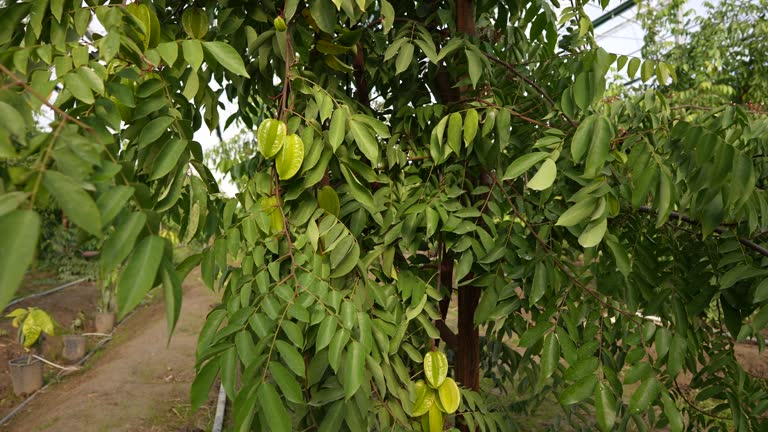
What Is Starfruit?
Starfruit, or carambola, is a small, tree-grown fruit known for its distinctive five-pointed star shape when sliced. The fruit has a thin, edible, waxy skin ranging from pale green to bright yellow when ripe. Its flesh is crisp, juicy, and mildly sweet, with a subtle tartness — a refreshing tropical snack you can enjoy straight from the tree.
Bonus: Starfruit trees are attractive ornamentals too, with pretty lilac-pink flowers and glossy green foliage.
Why Grow Starfruit in a Tropical Greenhouse?
A tropical greenhouse provides an ideal controlled environment for starfruit, especially in regions with:
- Cooler winters
- Unpredictable weather
- Subtropical or borderline climates
Benefits of greenhouse cultivation:
- Stable warm temperatures
- Protection from frost and cold snaps
- Shield from high winds and heavy rain
- Easier pest and disease management
- Year-round growing potential in the right conditions
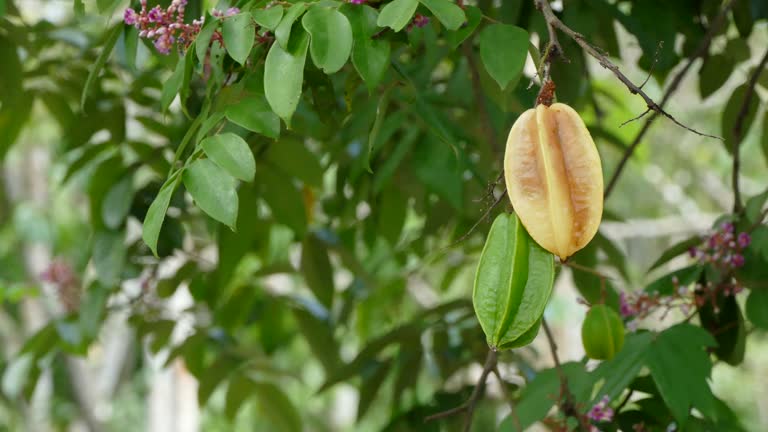
Best Starfruit Varieties for Greenhouse Growing
Not all starfruit types are created equal — some are sweeter, larger, or hardier than others.
Popular varieties for greenhouses:
- Arkin: Sweet, widely grown, and reliable
- Fwang Tung: Mildly sweet and good for small spaces
- Kary: Very sweet and productive
- Maher Dwarf: Compact, ideal for greenhouse pots
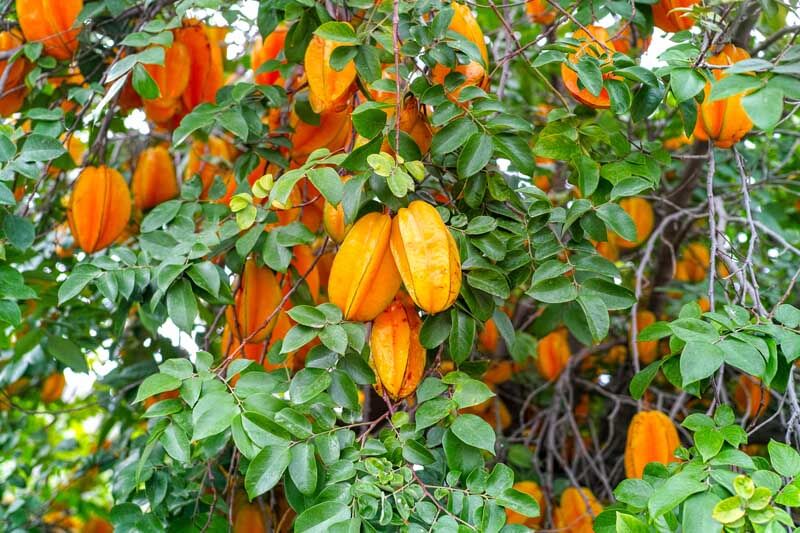
When to Plant Starfruit in a Greenhouse
Starfruit can be planted year-round in a tropical greenhouse where temperatures remain consistently warm. The ideal planting period is spring to early summer if your greenhouse has seasonal shifts in temperature.
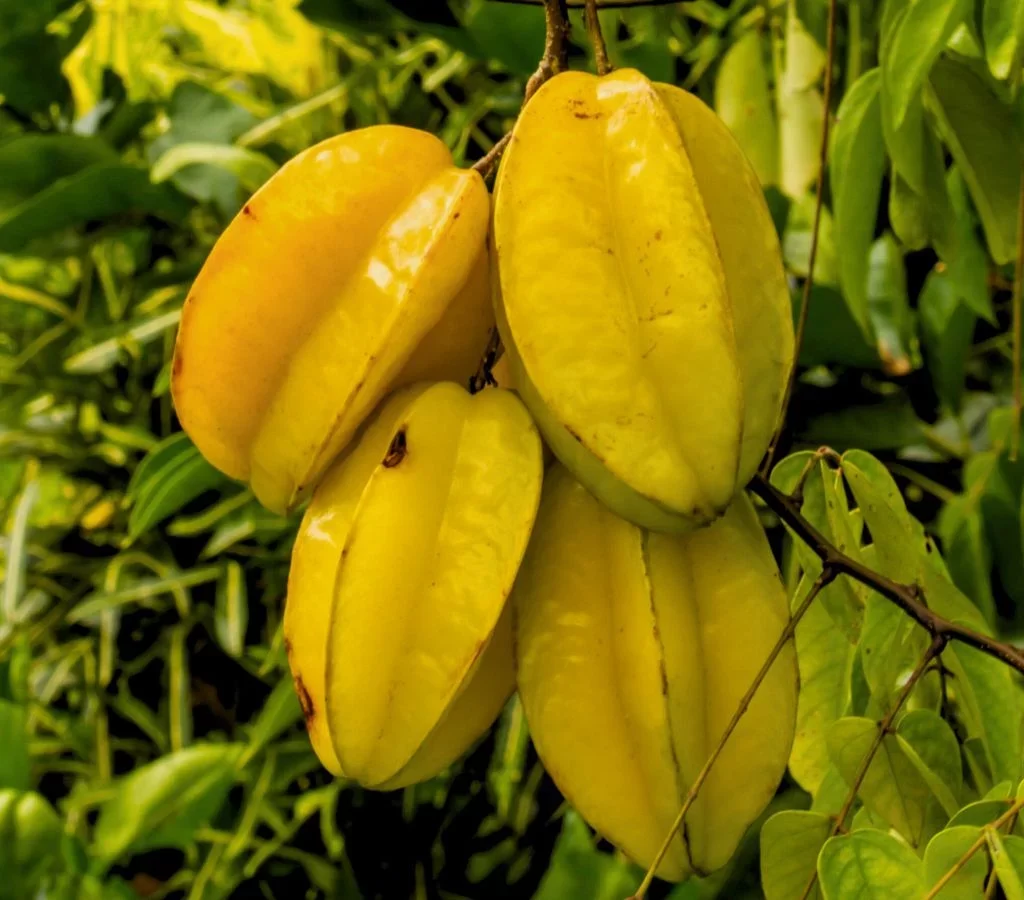
How to Plant Starfruit in a Tropical Greenhouse
1. Choosing the Right Container
If planting in pots:
- Use a 20–30 gallon container
- Ensure excellent drainage (add gravel or coarse sand at the bottom)
For in-ground greenhouse beds:
- Loamy, well-draining soil is best.
- pH should be 5.5–6.5.
Enrich with:
- Organic compost
- Well-rotted manure
2. Planting Process
- Dig a hole twice as wide as the root ball.
- Gently loosen the roots.
- Position the plant so the soil line of the container matches the greenhouse bed or pot soil level.
- Backfill with enriched soil.
- Water thoroughly after planting.
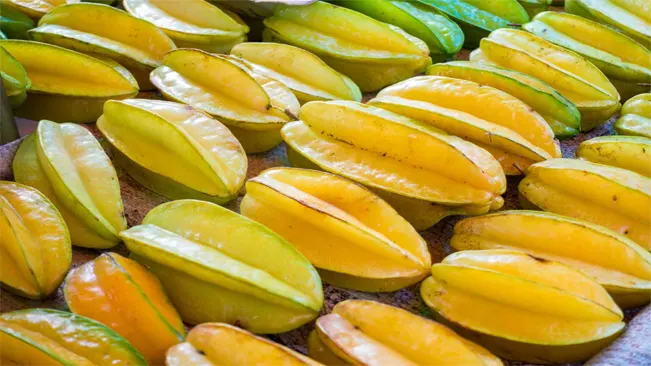
Temperature, Light & Humidity Needs
Starfruit thrives in:
- Temperature: 70°F–95°F (21°C–35°C)
- Humidity: 50–70%
- Full sun: 8+ hours daily
In your greenhouse:
- Use supplemental grow lights if natural light is limited.
- Install a thermometer and hygrometer to monitor climate levels.
- Use a misting system or pebble trays to maintain humidity.
Watering and Fertilizing
Watering
Starfruit prefers evenly moist, not soggy soil.
Tips:
- Water when the top 2 inches of soil feel dry.
- In hotter months, water 2–3 times a week.
- Reduce in cooler periods to avoid root rot.
Fertilizing
Feed your starfruit regularly for strong growth and fruiting.
Fertilizer guide:
- Balanced fertilizer (10-10-10) every 6–8 weeks
- Add organic compost or aged manure seasonally
- Apply a potassium-rich fertilizer before flowering for better fruit set
Pruning and Maintenance
Regular pruning helps manage size, improve airflow, and increase productivity.
When to prune:
- After fruiting season
- Remove:
- Dead, diseased, or crossing branches
- Excessive inner growth to let light in
Maintain a height of 6–10 feet in greenhouses for easy access and airflow.
Common Pests and How to Control Them
Even in a greenhouse, starfruit can attract some pests.
| Pest | Symptom | Control |
|---|---|---|
| Aphids | Sticky leaves, curled tips | Neem oil, insecticidal soap |
| Mealybugs | Cotton-like clusters | Alcohol swab, neem oil |
| Fruit Flies | Infested, rotting fruits | Sticky traps, clean fallen fruits |
| Spider Mites | Yellow stippling on leaves | Increase humidity, use miticide |
Always inspect new plants before bringing them into the greenhouse.
Flowering and Pollination
Starfruit trees produce clusters of star-shaped, pink to lavender flowers that can bloom several times a year in tropical greenhouse conditions.
Pollination tips:
- Starfruit trees are self-pollinating but benefit from cross-pollination.
- In a greenhouse, use a small brush to transfer pollen between flowers.
- Encourage airflow and beneficial insects if possible.
Harvesting Your Starfruit
Time to maturity:
- 10–14 months from planting a young tree
- 60–75 days from flower to mature fruit
Signs it’s ready to pick:
- Bright yellow skin with a hint of light green
- Firm flesh with slightly browning tips at the ridges
How to harvest:
- Use pruning shears or handpick carefully.
- Store at room temperature or refrigerate for up to 2 weeks.
Uses and Health Benefits of Starfruit
Starfruit is:
- Low in calories
- High in vitamin C, potassium, fiber, and antioxidants
Culinary uses:
- Fresh fruit salads
- Juices and smoothies
- Desserts and preserves
- Lightly cooked in stir-fries and seafood dishes
Important: Starfruit contains oxalates, so people with kidney issues should consume it cautiously.
Tips for Success
- Maintain consistent warmth — never let temperatures drop below 50°F (10°C).
- Prune regularly for manageable growth.
- Monitor humidity and ventilation to prevent fungal diseases.
- Water consistently but avoid waterlogged soil.
- Use organic mulches to retain moisture and suppress weeds in greenhouse beds.
Final Thoughts
Growing starfruit in a tropical greenhouse might sound ambitious, but with a little care and the right conditions, it’s a rewarding and relatively low-maintenance endeavor. From its stunning flowers to crisp, star-shaped fruits, this plant adds exotic beauty and tropical flavor to your greenhouse garden.
Whether you’re growing for the sheer novelty, the fresh taste, or the year-round harvest potential, starfruit is a standout addition for any tropical greenhouse gardener.

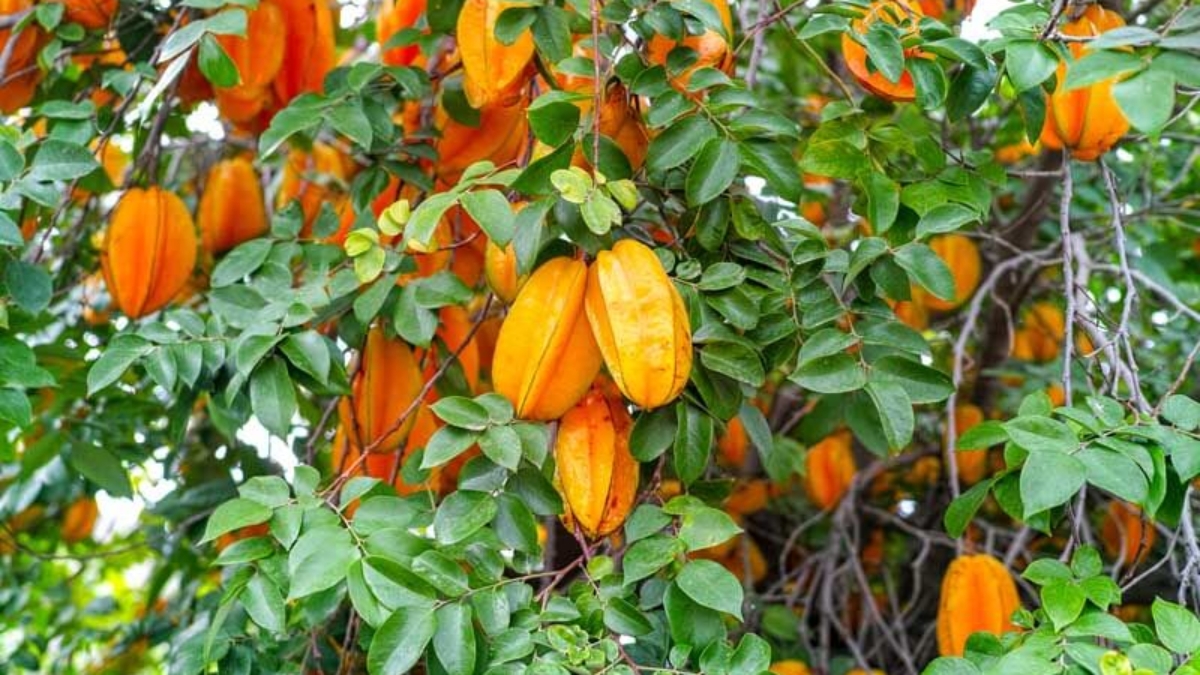




Leave A Comment